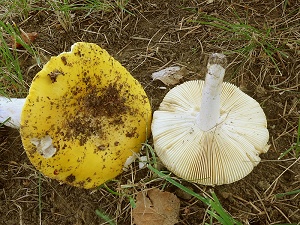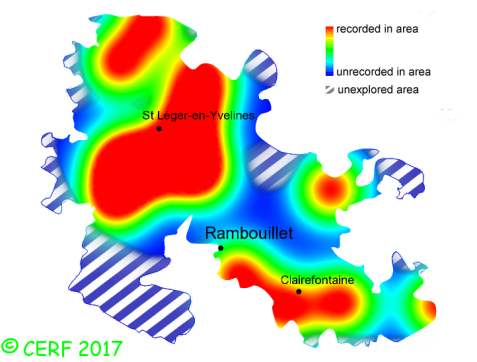| Russula claroflava Grove |
|
|
|
|
|
|
The cap is golden yellow to lemon yellow; its margin is striate when mature. The cap surface is smooth, viscid or sticky. The stem is white, becoming grey with age, without ring. The flesh is turning greyish when exposed to air; its taste is mild; its texture is grainy (breaking like a chalk stick). The gills are yellowish, free, distant . The spore print is pale ochre. This species is mycorrhizal. It grows on the ground, under broad-leaved trees, with birch, alder, chestnut. The fruiting period takes place from June to November.
Chemical tests : flesh becoming reddish then grey when in contact with iron sulphate; slow reaction to Ga´ac (blue); negative reaction to sulpho-vanillin. Distinctive features : white flesh; yellow gills, turning grey in bruises or with age; flesh turning red when in contact with formalin; under birch trees in swamps Russula claroflava is occasional and widely present in the forest of Rambouillet, and is occasional, more generally speaking . | ||
|
page updated on 14/01/18

